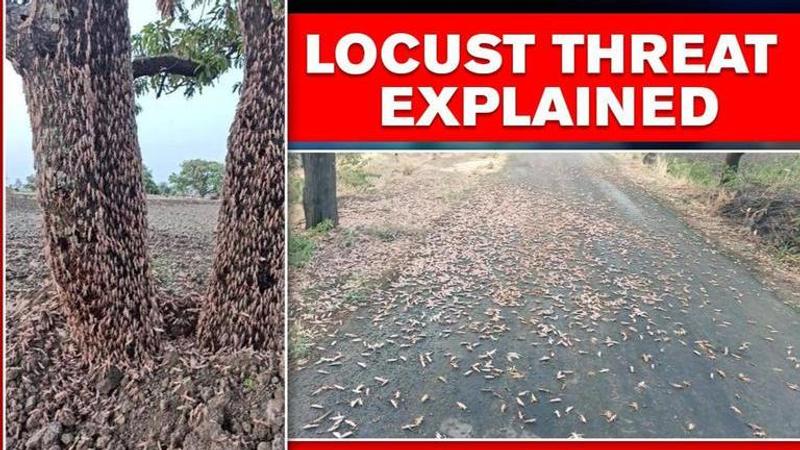Published 17:10 IST, May 25th 2020
Locust threat: 1 sq km of swarm can consume same amount of food as 35,000 people
The swarm of desert locusts travelled to India after breeding and maturing in Iranian provinces and Pakistan’s Balochistan province, devastating farmlands.

Locust attacks have been haunting the farmers of East Africa for months and now it has become a major problem for Indian farmers, especially in the states of Rajasthan, Madhya Pradesh, and Uttar Pradesh. The swarm of locusts travelled to India after breeding and maturing in Iranian provinces and Pakistan’s Balochistan province, devastating farmlands across Rajasthan, UP and MP.
According to the Food and Agriculture Organisation (FAO), the Desert Locust is the most destructive migratory pests in the world and a single square kilometre of the swarm can contain up to 80 million adults, with the capacity to consume the same amount of food in one day as 35,000 people. Large swarms pose a major threat to food security and rural livelihoods and the situation has deteriorated due to favourable climatic conditions, allowing widespread breeding in East Africa, Southwest Asia and the area around the Red Sea.
The Desert Locusts are considered as the most invasive species of locust since it can migrate over large distances and can rapidly breed. In February, Somalia declared a state of emergency due to the locust invasion and the FAO described the situation as worst in the last 25 years. According to a Bloomberg report, farmers in the village of Pakistan's vast and arid Balochistan province have lost crops worth hundreds of thousands of rupees.
Exponential increase
Desert Locust live for three months and their eggs hatch after two weeks which can increase locust numbers in a short period. There can be an exponential increase in the number of locusts with another generation of breeding as hoppers fledge and become adults after six weeks and take at least one month to mature and be ready to lay eggs.
Locust numbers can increase by 20 times in three months, 400 times after six months, and 8000 times after nine months. They can travel up to 150 km in a day during the day downwind and the best time to spray pesticide is early in the morning and late in the afternoon when they are settled on the ground.
Updated 17:10 IST, May 25th 2020




